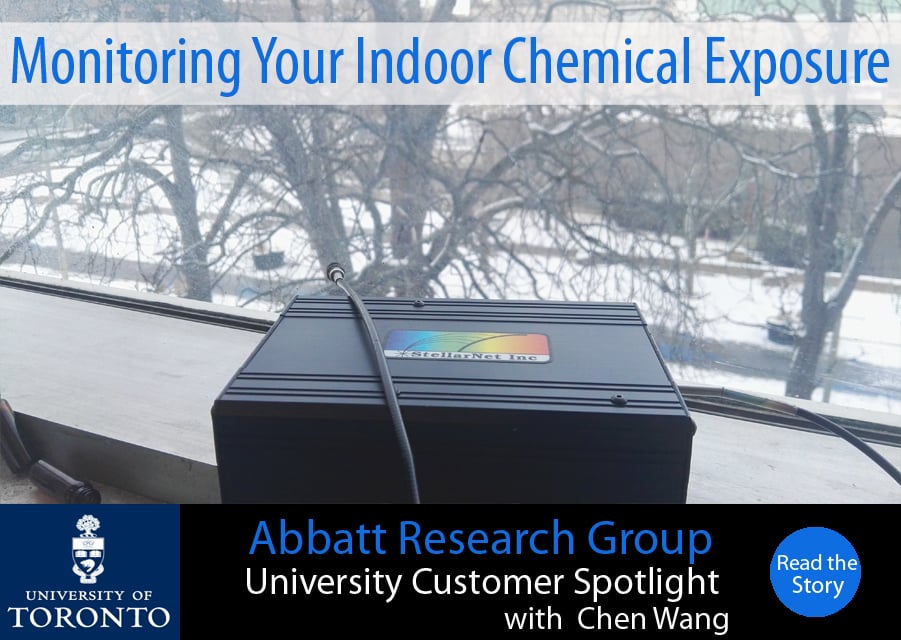
In January 2020, we spoke with Chen Wang about her recent publication, “The atmospheric chemistry of indoor environments”; Q&A is a combination of interview and paper info.
Why should we care about the atmosphere in indoor environments?
Humans increasingly spend much of their time indoors and so it is important to understand at a fundamental level the factors that control our chemical exposure in indoor environments. Through air inhalation, dust ingestion and dermal exposure, the indoor environment plays an important role in controlling human chemical exposure. Indoor emissions and chemistry can also have direct impacts on the quality of outdoor air. And so, it is important to have a strong fundamental knowledge of the chemical processes that occur in indoor environments.
What is Atmospheric Chemistry?
Atmospheric chemistry is (in short) our understanding of the different partitioning and reactive processes that occur indoors, contrasting the behavior with that which occurs outdoors. “Particularly important in controlling the chemical state of the indoor environment, and our pollutant exposure, is the chemistry involved in the interplay of molecules moving between surfaces, the gas phase, and particles.”
How are we exposed to chemicals indoors, if we’re not working in a lab?
The illustration above demonstrates potential exposures to chemicals that may arise by breathing airborne particles or by direct uptake of chemicals through the skin.
Indoor chemistry versus outdoor chemistry – is there a difference?
A primary goal of the article is to contrast indoor chemistry to that which occurs outdoors, which we know to be a strongly gas-phase, oxidant-driven system in which substantial oxidative aging of gases and aerosol particles occurs. By contrast, indoor environments are dark, gas-phase oxidant concentrations are relatively low, and due to air exchange, only short times are available for reactive processing of gaseous and particle constituents. There are rich research opportunities available if the advanced measurement and modeling tools of the outdoor atmospheric chemistry community continue to be brought indoors.
How does Spectroscopy contribute?
One of the three main differences between the outdoor and indoor environments is that “indoor photon fluxes are significantly lower than outdoors, especially for ultraviolet light.” Spectrometers can be calibrated for spectral irradiance (Watts/m2) and be used to measure and compare spectral irradiance from a variety of indoor and outdoor locations. In the figure from the article, irradiance measurements were conducted in different indoor settings in Toronto in July, using a Black-Comet, StellarNet Inc. spectroradiometer.
Any benefits of using the BLACK-Comet spectrometer for irradiance measurements?
Chen said that the spectral radiometer was in the lab when she arrived, over two years ago. “I didn’t know how to use it,” she told us, “but it was very easy to learn. There is a manual and it was easy to use.” Additionally, many of the measurements taken are near windows or near different types of lighting. “It’s very small, so it’s very easy to move and take to different rooms and places, and the data is very easy to analyze,” she said.
How did Chen get involved in indoor atmospheric chemistry?
Chen is part of the Abbatt group at the University of Toronto, which “focuses on studies of atmospheric chemical processes, with attention given to the multi-phase chemistry occurring on surfaces and with aerosol particles and clouds.” She studied the air in northern China, phase partitioning during secondary organic aerosol (SOA) formation, and developed models to predict SOA formation. Chen is currently researching secondary organic aerosol formation from cigarette smoking in indoor environments.
For more information, check out “The Atmospheric Chemistry of Indoor Environments” by Dr.s Abbatt and Wang, or see the Abbatt Group’s site: https://www.abbattgroup.ca/







